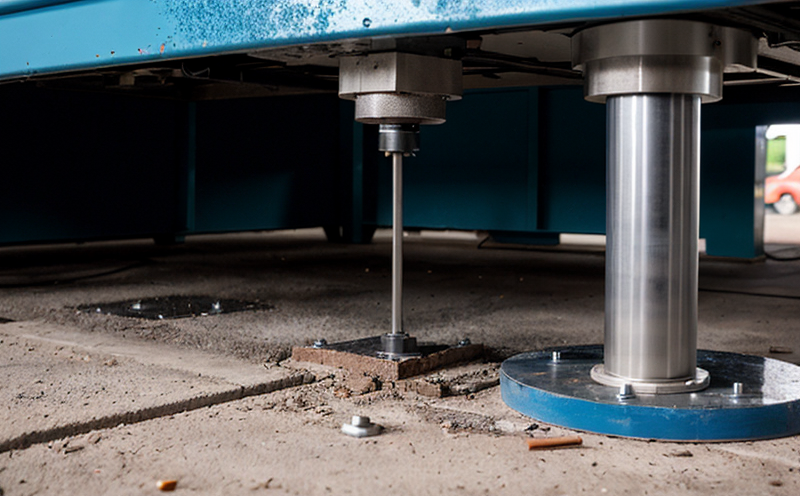ASTM E1928 Residual Stress Testing by Layer Removal Method
The ASTM E1928 standard is pivotal in assessing residual stress and distortion in materials used within additive manufacturing (AM) and 3D printing processes. This method, referred to as the "Layer Removal Method," provides a unique approach to understanding how internal stresses affect material integrity during AM. Understanding these stresses is critical for ensuring part performance, especially in sectors like aerospace, automotive, and medical devices where high precision and reliability are paramount.
The process involves carefully removing thin layers of the test specimen before measuring the resulting distortions. By calculating the changes in shape or size after each layer removal, engineers can derive valuable insights into the residual stresses that have built up during manufacturing. This non-destructive technique allows for the accurate assessment of stress distribution without compromising the integrity of the part.
The ASTM E1928 standard ensures consistent and reliable testing across different laboratories by specifying detailed procedures and acceptance criteria. It covers a wide range of materials commonly used in AM, including metals like stainless steel (SS) and titanium alloys, as well as polymers such as polycarbonate (PC).
One of the key challenges in AM is managing residual stresses that can lead to part distortion or failure during processing or use. ASTM E1928 helps mitigate these risks by providing a standardized method for identifying and controlling stress levels. This is particularly important when dealing with complex geometries where internal stresses are more pronounced.
Testing according to ASTM E1928 involves several steps: selecting the appropriate test specimen, preparing it properly, removing layers systematically, measuring distortions accurately, and interpreting results comprehensively. Each step requires precision and adherence to standards to ensure accurate stress assessments.
The Layer Removal Method is especially useful for parts with intricate designs where traditional testing methods may not be applicable or effective. By breaking down the part into manageable sections, engineers can gain a deeper understanding of how stresses vary across different regions. This knowledge is crucial for optimizing manufacturing processes and ensuring product quality.
Accurate stress measurement is essential in AM to prevent issues such as warping, cracking, or other defects that could compromise part performance. ASTM E1928 provides the tools necessary to achieve this accuracy, making it an indispensable resource for quality managers, compliance officers, R&D engineers, and procurement teams.
Compliance with ASTM E1928 is not only beneficial but also mandatory in many industries due to regulatory requirements. By adhering to these standards, manufacturers can demonstrate their commitment to producing high-quality parts that meet or exceed industry expectations.
Applied Standards
The ASTM E1928 standard for residual stress testing by the Layer Removal Method is widely recognized and applied across various industries. This method complies with several international standards, including ISO 15671-4:2013 and EN 17559:2012. Compliance ensures consistency in testing practices and results, which is critical for maintaining quality control.
- ASTM E1928: Specifies the procedure for determining residual stresses by layer removal method using a combination of mechanical testing and metrology techniques.
- ISO 15671-4:2013: Provides guidance on non-destructive methods for measuring residual stress in materials used in AM.
- EN 17559:2012: Outlines the requirements and procedures for evaluating distortion caused by residual stresses in AM components.
These standards provide a comprehensive framework that ensures accurate and reliable testing of residual stress and distortion, contributing to improved product quality and safety.
Benefits
- Precise Stress Assessment: The Layer Removal Method provides detailed insights into residual stresses, enabling more accurate assessments compared to other methods.
- No Destructive Impact: This non-destructive approach allows for repeated testing without compromising the integrity of the part.
- Compliance Assurance: Compliance with ASTM E1928 ensures that tests meet industry standards, enhancing product reliability and safety.
- Data Accuracy: The method's precision in measuring distortions contributes to more accurate stress calculations, leading to better-informed decisions during manufacturing processes.
The Layer Removal Method by ASTM E1928 is a cornerstone for ensuring the quality and integrity of parts produced through AM. Its ability to provide precise and reliable data makes it an essential tool for industries reliant on high-quality components.
Industry Applications
The ASTM E1928 standard finds extensive application in sectors where precision and reliability are critical, such as aerospace, automotive, medical devices, and defense. In these fields, the ability to accurately measure residual stresses and distortions can significantly impact product performance and safety.
Aerospace manufacturers use this method to ensure that parts like engine components or airframe structures meet stringent quality standards. Automotive companies leverage ASTM E1928 for testing critical components such as engine blocks or transmission housings, where even minor stress variations could lead to failures.
In the medical device industry, ASTM E1928 helps in producing implants and surgical instruments that must withstand rigorous conditions without compromising on quality. Similarly, defense contractors use this standard to assess parts for military applications, ensuring they meet operational requirements under extreme conditions.
The versatility of ASTM E1928 makes it a valuable tool across various industries. Its ability to provide accurate stress data is crucial for maintaining high standards in manufacturing processes and product performance.





